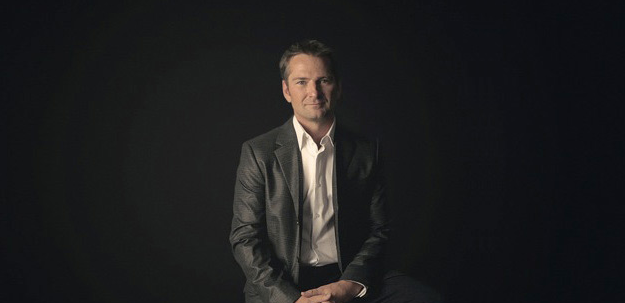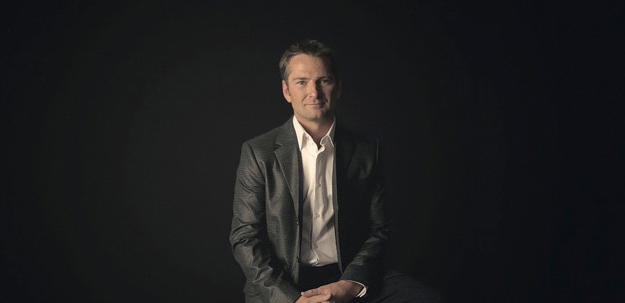Views from Doug Stephens, The Retail Prophet

The retail industry is undergoing a transformation. You know it; we know it; pretty much everyone knows it. But how exactly is this transformation occurring and what will be impacted? Customer experience is one of the most important elements that’s evolving due to new market dynamics, emerging technologies and demographic preferences.

To get a clearer sense of how these changes are driving changes across the facilities management landscape, I was excited to speak recently with Doug Stephens, one of the world’s foremost retail industry futurists. Doug’s a widely respected expert in the field having not only authored two books but having spent over 20 years in the retail industry, holding senior international roles including the leadership of one of New York City’s most historic retail chains.
For those who are joining us at our upcoming User Group, ServiceChannel CONNECT, you’ll get to hear Doug’s insights directly, as he will be our guest speaker. In the meantime, I wanted to share some of my conversation with Doug on customer experience, the future of brick & mortar and how facilities professionals can play a crucial role in this new environment.
Conversation with Doug Stephens, The Retail Prophet
Tom Buiocchi: You discuss the fact that convenience is changing. With the merging of online with offline experiences, in your opinion, what is fundamentally driving this change?
Doug Stephens: Our consumer brains are being completely recalibrated! In a remarkably short time, we’ve been trained to expect almost instant gratification. Much of this is being driven by tech-savvy entrepreneurs who are coming into old, tired categories that are dominated by stagnant incumbent brands and completely reinventing the customer experience by leveraging technology where it makes sense.
Uber, Lyft, Airbnb, Warby Parker, Dollar Shave Club, Bonobos – are all brands that have made use of technology to reinvent relatively old categories and significantly increase convenience within them.
TB: With customer experience often being the deciding factor in whether retailers or restaurants succeed or fail, what advice can you give facilities managers of multi-location enterprises to foster a positive customer experience?
DS: Truly remarkable experiences are immersive and highly sensorial in nature. When we recall some of our earliest and most enduring memories they often include multiple sensory inputs. The same mind-set should apply to facilities management. The object is not simply to maintain a space but rather to create a remarkable sense of place. How it looks, sounds, smells, and feels are all very powerful drivers of the customer experience.
We need to move beyond thinking of retail facilities management as an exercise in lighting, custodial and HVAC and begin regarding the retail space as masterful stagecraft, where every environmental nuance has a direct and profound impact on the audience… the shopper.
TB: What guidance would you provide to facilities managers to help them be a part of the broader C-level conversations taking place around the future of brick & mortar?
DS: I would recommend that facilities managers make the case that the nature of their work is not simply a cost to a business but a potential revenue driver, when done well. The C-suite views maintenance as a necessary evil.
It needs to be positioned as a proactive and creative partner in building extraordinary environments that have a direct impact on sales, customer satisfaction and profit. We’ve proven beyond doubt that businesses that outperform on customer experience also outperform financially. Facilities management needs to position itself as a vital component of that equation.
TB: Where do you see opportunities for brick & mortar retail and retail-like enterprises to take advantage of their physical presence vs. online-only players?
DS: Technology has taken us to a point where media, in all its forms, is now the store. What I mean by that is that every form of media in landscape (my phone, my appliances, my smart TV, etc.) is now the store. I can see vast assortments of products, gather great product information and enjoy a frictionless payment transaction – all without leaving my home.
Conversely though, physical stores and retail spaces are becoming a powerful form of media. Physical stores are no longer merely a distribution channel for products but more importantly a key channel for experiences!
But this means that retailers need to rethink how they plan, build, manage and measure their stores. It’s no longer simply about sales per square foot but rather experiences per square foot. That is what will drive loyalty across channels.
TB: What are some of the new & emerging technologies that physical retail (and retail-like) players need to be taking advantage of and deploying across their locations over the next several years?
DS: Rather than focus on individual technologies – of which there are many – executives would be better served to think about their own customer’s journey in their category and to do so in a very detailed way. Ultimately, they need to identify moments of truth within that journey.
Within each moment of truth, there may be an opportunity to leverage technology, either to remove friction or add delight. Until you do this heavy lifting it’s impossible to know if your company should be pursuing artificial intelligence, big data technology, video analytics, robotics etc. It’s all just a merry-go-round of technology that lacks any relevance until you understand exactly what experience you’re setting out to deliver.
If you’re a ServiceChannel customer, we hope you’ll join us in Las Vegas next month at ServiceChannel CONNECT and hear more from Doug and the ServiceChannel team.



